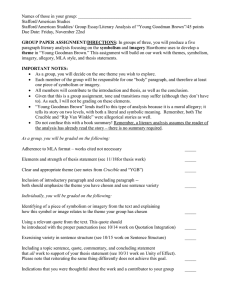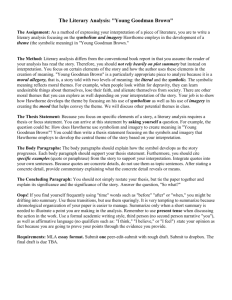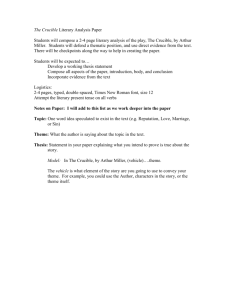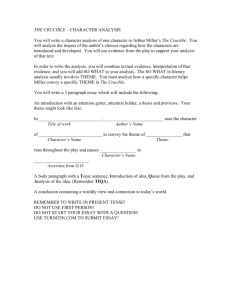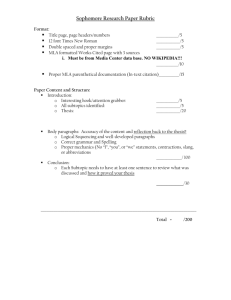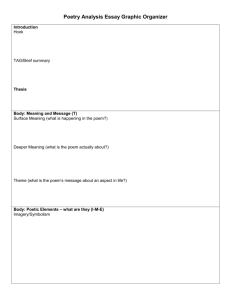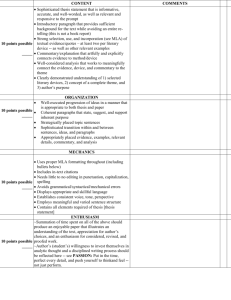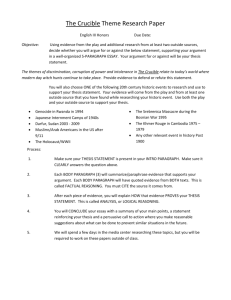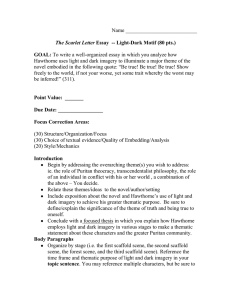YOUR NAME: Honors American Studies Literary Analysis of “Young
advertisement
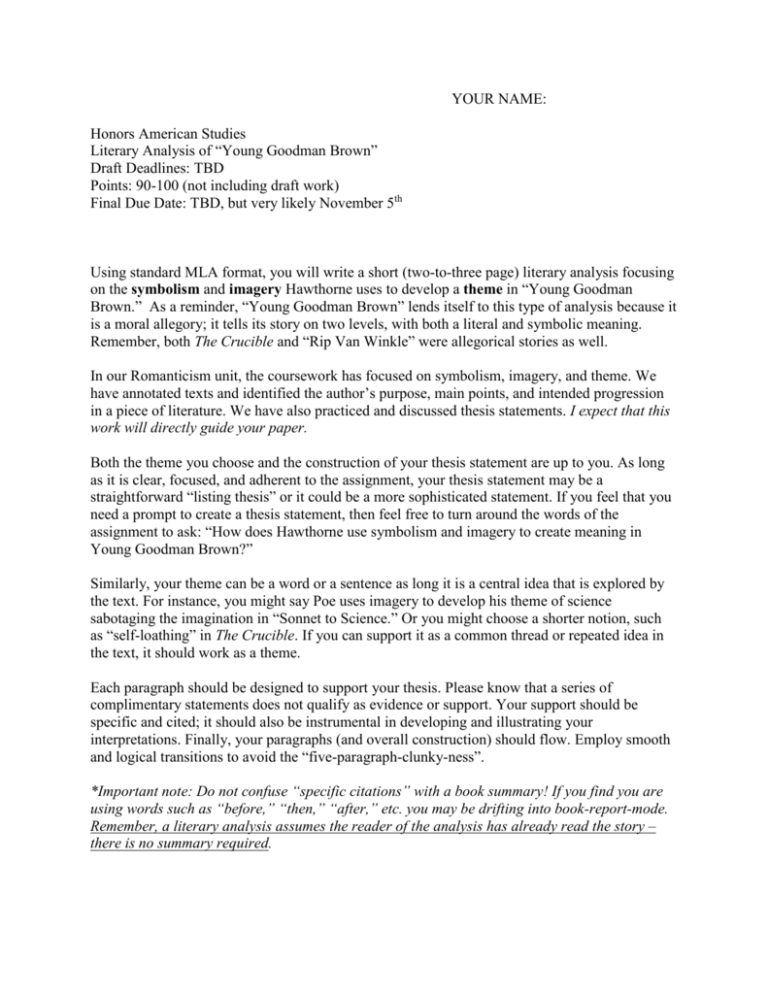
YOUR NAME: Honors American Studies Literary Analysis of “Young Goodman Brown” Draft Deadlines: TBD Points: 90-100 (not including draft work) Final Due Date: TBD, but very likely November 5th Using standard MLA format, you will write a short (two-to-three page) literary analysis focusing on the symbolism and imagery Hawthorne uses to develop a theme in “Young Goodman Brown.” As a reminder, “Young Goodman Brown” lends itself to this type of analysis because it is a moral allegory; it tells its story on two levels, with both a literal and symbolic meaning. Remember, both The Crucible and “Rip Van Winkle” were allegorical stories as well. In our Romanticism unit, the coursework has focused on symbolism, imagery, and theme. We have annotated texts and identified the author’s purpose, main points, and intended progression in a piece of literature. We have also practiced and discussed thesis statements. I expect that this work will directly guide your paper. Both the theme you choose and the construction of your thesis statement are up to you. As long as it is clear, focused, and adherent to the assignment, your thesis statement may be a straightforward “listing thesis” or it could be a more sophisticated statement. If you feel that you need a prompt to create a thesis statement, then feel free to turn around the words of the assignment to ask: “How does Hawthorne use symbolism and imagery to create meaning in Young Goodman Brown?” Similarly, your theme can be a word or a sentence as long it is a central idea that is explored by the text. For instance, you might say Poe uses imagery to develop his theme of science sabotaging the imagination in “Sonnet to Science.” Or you might choose a shorter notion, such as “self-loathing” in The Crucible. If you can support it as a common thread or repeated idea in the text, it should work as a theme. Each paragraph should be designed to support your thesis. Please know that a series of complimentary statements does not qualify as evidence or support. Your support should be specific and cited; it should also be instrumental in developing and illustrating your interpretations. Finally, your paragraphs (and overall construction) should flow. Employ smooth and logical transitions to avoid the “five-paragraph-clunky-ness”. *Important note: Do not confuse “specific citations” with a book summary! If you find you are using words such as “before,” “then,” “after,” etc. you may be drifting into book-report-mode. Remember, a literary analysis assumes the reader of the analysis has already read the story – there is no summary required. Allow your conclusion to go beyond a simple restatement of your thesis. Use the conclusion to tie your paper together on a higher-level of thinking. Think of Bloom’s Taxonomy, or your “so what?” question; see if you can elevate beyond knowledge, comprehension, and application into a realm of analysis and synthesis (we will save “evaluation” for a later assignment). Push yourself as a writer. Do not settle on the first attempts, but ask yourself if there is a better way to say something, a different order, or a compelling reason to adjust your thesis? Embrace writing as a process. I expect the paper will stay between two-to-three pages. I do not seek lofty length in this assignment; rather, I seek disciplined and scope-sensitive perfection. Lastly, establish Ethos. Throughout your paper, establish your authority through the use of excellent grammar, punctuation, and academic voice. Adhere to MLA format (see my website for additional MLA support). Avoid informal language, passive voice, wordiness, and redundancy. If your intention is to build on a previously made point, then make sure you are expanding, enhancing, or adding to it and NOT simply repeating it. The guidelines listed above will serve as a general rubric for this assignment. If you choose to embrace your “individual challenge” (aka; the personal note from your Crucible feedback or your own, modified version) please include it here. This will be an added – and graded – ten points to your assignment. (An aside: I realize that in some cases your “individual challenge” will be almost a direct-repeat one of the paragraphs outlined above. This was expected; your Crucible submissions inspired many of the guidelines for this assignment.) ______________________________________________________________________________ ______________________________________________________________________________ ______________________________________________________________________________ ______________________________________________________________________________ ______________________________________________________________________________
